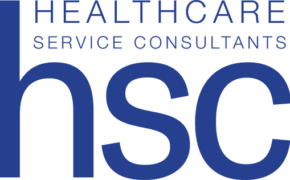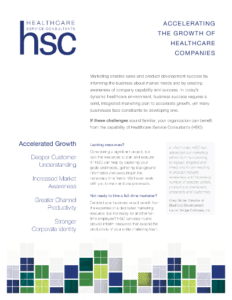Table of Contents
Marketers use a very simplistic differentiator: B2B audiences typically base purchasing decisions on logic while consumer audiences purchase with emotion. And, emotion is rooted heavily in the benefits of a product or service.
Makes sense, right? Investing in a new piece of equipment for your manufacturing plant requires a great deal of thought, planning, and ROI calculation. People buying a new mattress or washing machine might do a small amount of research. But, more often than not, their purchase will be within a brief transactional period and for the purposes of making one’s life easier or more comfortable.
In healthcare, the divide is even more heightened. And, the B2B environment in healthcare marketing holds distinct characteristics that separates it from other industries. Here are the three most important factors to consider when marketing to your B2B healthcare audience.
1) Decision-Makers Are Uniquely Educated
Buying decisions made within the healthcare sphere require a specific, niche knowledge about the products or devices in which an organization is investing. Decision-makers understand that their selection not only impacts an entire system of internal users—but also patients. They have to contemplate how long implementation and adoption will take. And, they have to consider how that affects the business model in both the short- and long-term.
From a marketing perspective, coming to the table understanding that attitude is critical for selling success. A buyer is much more likely to get on board if you have solid proof points that support marketing claims—anything that lessens the likelihood they’ll make the wrong decision (and potentially lose their job).
2) Healthcare Is a Price-Sensitive Industry
It takes a great deal of capital to run a healthcare organization, and margins are thin. Finances are always in flux—usually in an “in the red” sense. This is due to the way the reimbursement model is structured and the diversity among third-party payers. And, decision-makers are well aware of this.
As opposed to another industry where a minimal investment in a product or service can result in revenue gains (sometimes in a relatively short period of time), a healthcare organization may never buy a product for $500 and use it to generate $50,000. Decision-makers know that the product you’re marketing to them will likely not make the organization more money.
What it might do is help the providers within that organization do their jobs better, leading to improved quality of care or reduced costs. That’s the messaging that will garner the most attention.
3) Healthcare Buyers Buy What They Have to Buy, Not What They Wish to Buy
We all have our own wish lists, but we also have our “must-have” lists. A hospital may wish to renovate their renal department to make it more welcoming and comfortable for dialysis patients. But, it also faces the reality that EHR software is in desperate need of an upgrade.
Another factor marketers need to take into consideration is that a committee, not an individual, makes big-ticket healthcare purchases. You need to be able to speak to the needs and concerns of all the constituents on a purchasing committee—even if the individuals on that committee disagree among themselves. If you are prepared to address a number of different angles and help constituents prioritize their needs, you become more of a trusted ally than an outside influencer.
The Buyer’s Journey Needs to Be About the Buyer
Your healthcare audience is constantly juggling priorities. They may relegate one initiative to the back burner because urgency dictates project rank. These buyers also have limited capacity for uncertainty, so there is no room for confusion in your marketing messaging. Accepting that your company’s sales cycle will be lengthy—six-to-twelve months, not three—allows you to create messaging that is consistent and that better accompanies your targets along their healthcare-specific buyer’s journey.




